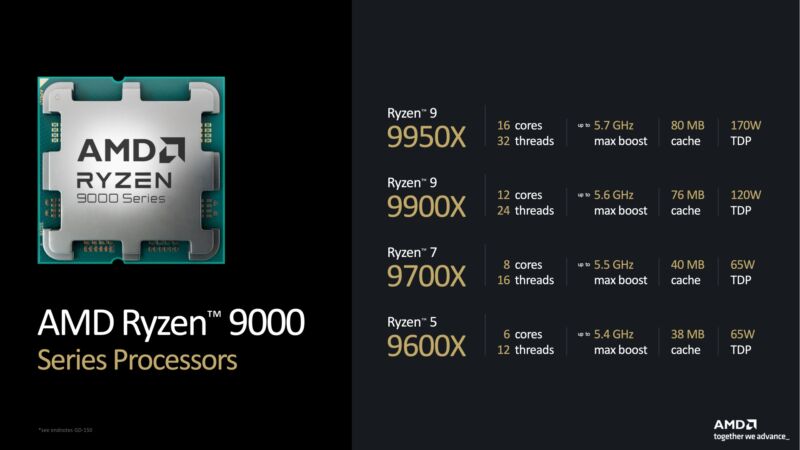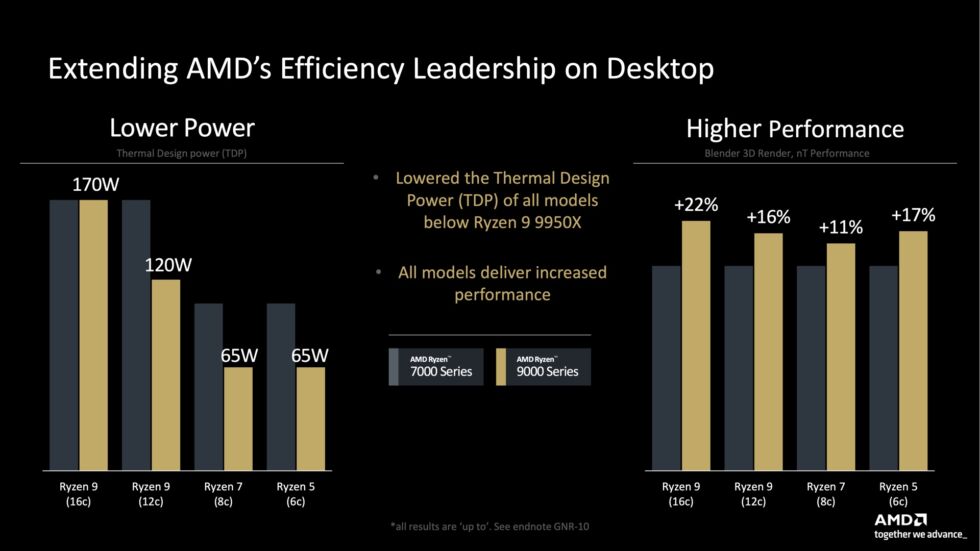AMD brags about Ryzen 9000’s efficiency, extends AM5 support guarantee to 2027

Enlarge / AMD's Ryzen 9000 launch lineup. (credit: AMD)
AMD has released more information about its next-generation Ryzen 9000 processors and their underlying Zen 5 CPU architecture this week ahead of their launch at the end of July. The company reiterated some of the high-level performance claims it made last month-low- to mid-double-digit performance increases over Zen 4 in both single- and multi-threaded tasks. But AMD also bragged about the chips' power efficiency compared to Ryzen 7000, pointing out that they would reduce power usage despite increasing performance.
Prioritizing power efficiencyAMD said that it has lowered the default power limits for three of the four Ryzen 9000 processors-the Ryzen 5 9600X, the Ryzen 7 9700X, and the Ryzen 9 7900X-compared to the Ryzen 7000 versions of those same chips. Despite the lower default power limit, all three of those chips still boast double-digit performance improvements over their predecessors. AMD also says that Ryzen 9000 CPU temperatures have been reduced by up to 7 Celsius compared to Ryzen 7000 chips at the same settings.

Ryzen 9000's low-double-digit performance gains are coming despite the fact that the company has lowered most of its chips' default TDPs. These TDP settings determine how much power one of AMD's CPUs can use (though not necessarily how much they will use). [credit: AMD ]
It's worth noting that we generally tested the original Ryzen 7000 CPUs at multiple power levels, and for most chips-most notably the 7600X and 7700X-we found that the increased TDP levels didn't help performance all that much in the first place. The TDP lowering in the Ryzen 9000 may be enabled partly by architectural improvements or a newer manufacturing process, but AMD already had some headroom to lower those power usage numbers without affecting performance too much. TDP is also best considered as a power limit rather than the actual amount of power that a CPU will use for any given workload, even when fully maxed out.